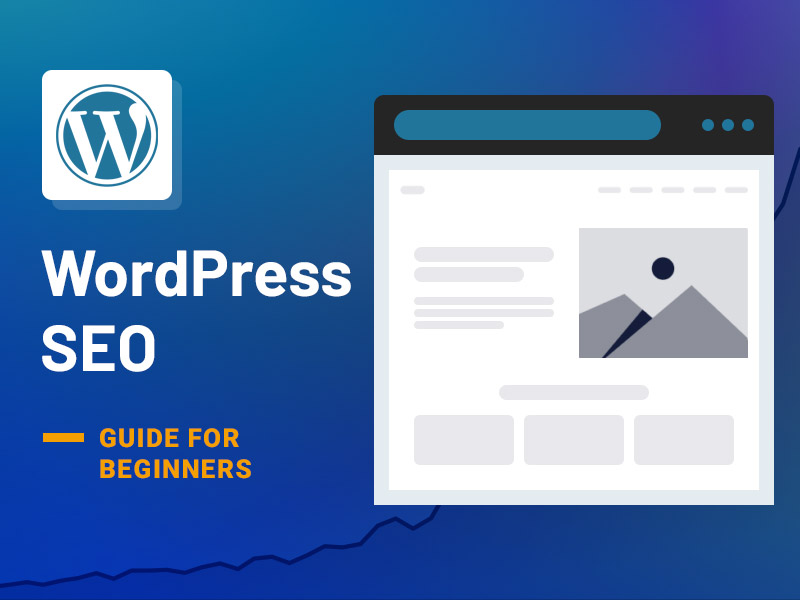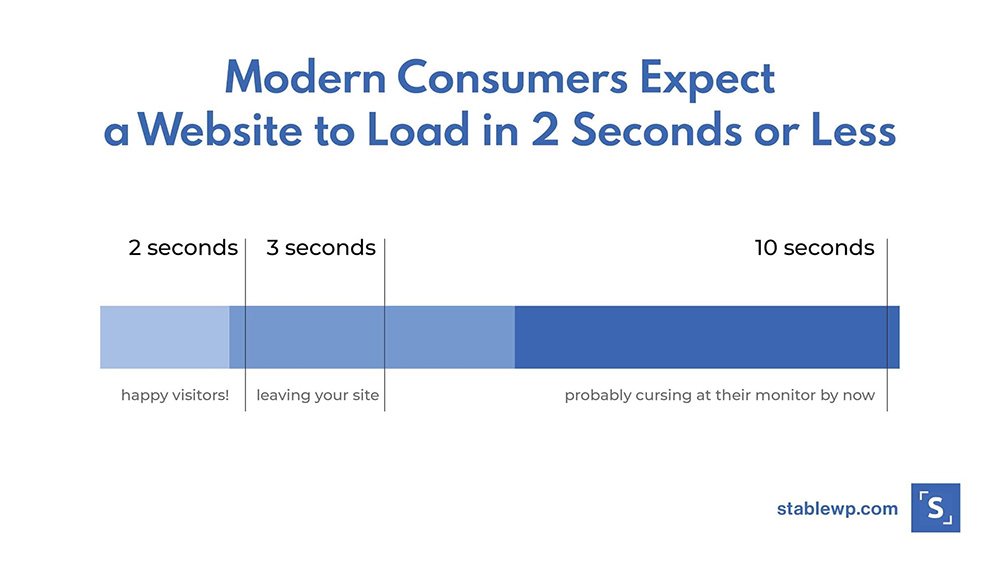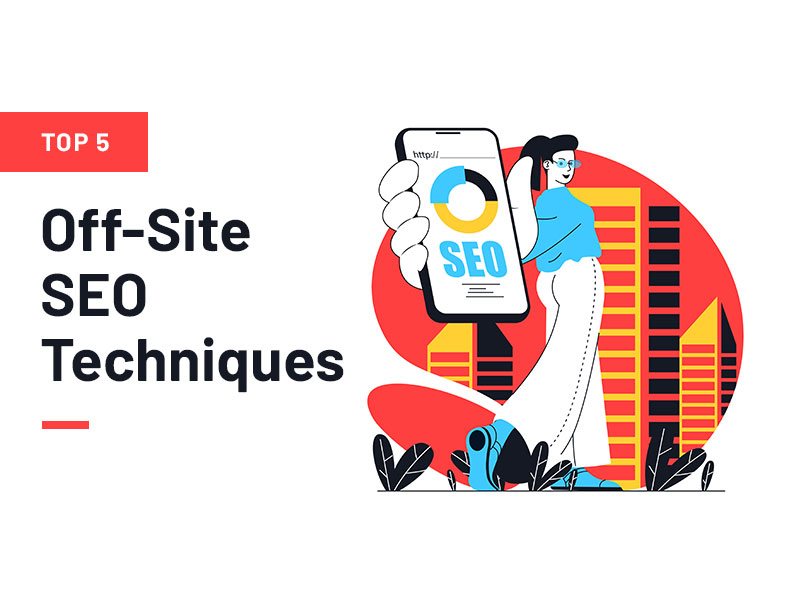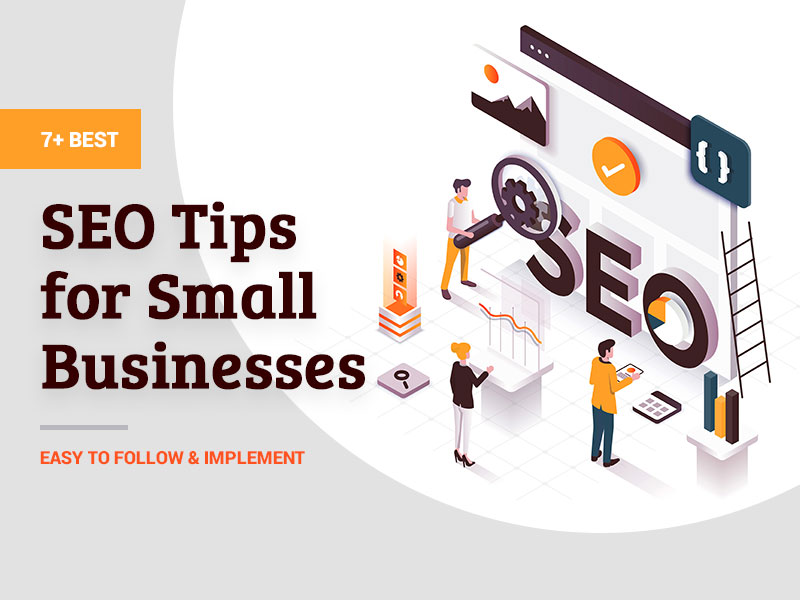In terms of SEO, WordPress is a unique content management system. Even though you use a system that does it correctly, you can still do many things to improve your performance.
You can adopt strategies and best practices to optimize your website, raise your search engine ranking, boost sales, increase subscribers, etc. The ultimate step-by-step WordPress SEO guide for beginners is provided in this article.
Things You Should Know
Step 1: Get Started with WordPress Settings
Step 2: Install WordPress SEO Plugin
Step 3: Submit Website to Google
Step 4: Optimize Your Website for Ranking
WordPress SEO Best Practices
What is WordPress SEO?
Search Engine Optimization (SEO) is optimizing your web pages to attract free organic traffic from search engines like Google, Bing, Yahoo, and more.
WordPress SEO optimizes your WordPress pages and posts (SERPs) to achieve high rankings on search engine results pages. This will increase the quantity and quality of visitors to your website.
This aims to implement WordPress SEO best practices on your site. This allows search engines to discover and display your content in search results quickly.
Search engines follow three procedures to locate and show your content to users:
- Crawling – Examining each URL to look for content online.
- Indexing – To quickly list the content they discovered during crawling in search results for pertinent queries, they must index it.
- Ranking – Putting the most pertinent content at the top of the list of indexed pages in search results every day, Google handles over 5.5 billion searches. Think about the increased traffic you could receive if you had a high ranking.
Simply put, SEO breathes life into your website. It does take time to see results, but it is still worth the effort. It does take time to see results, but it is still worth the effort.
First Things First – You Should Know
Hosting with Better Response Time
Website owners and SEO specialists should prioritize lowering server response times.
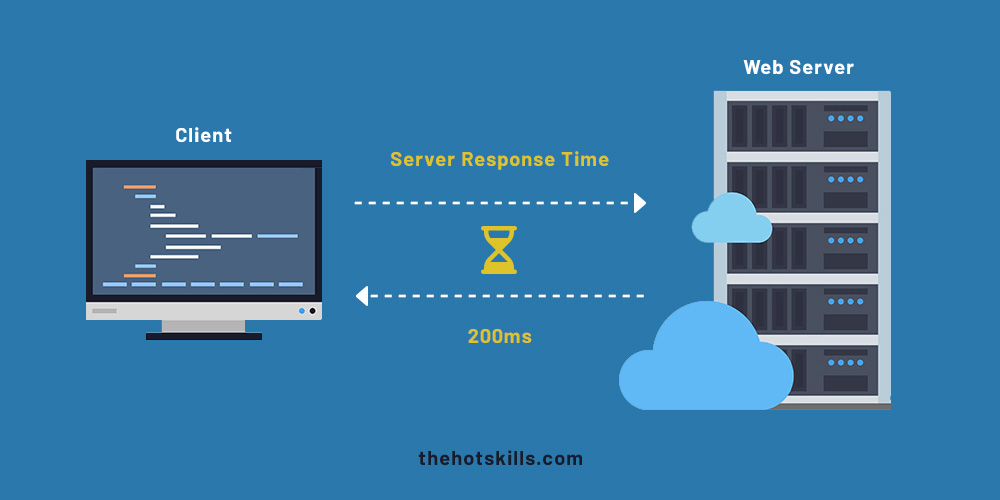
Spending time and money on a website that loads slowly will result in site abandonment. When a customer visits your page, the first few seconds determine whether they stay on it or leave for a rival.
The period between a client’s request for a page in a browser and the server’s response to that request is known as the server response time. The TTFB measures it (Time to First Byte). The time in milliseconds (TTFB) that it takes to respond to an HTTP request with the first byte of a page.
According to Google, aim for fewer than 200 milliseconds response time. The ideal TTFB is 100 ms, and anything over 500 ms needs to be revised. Everyone must use this time consistently. It should stay the same based on where the users are located.
Loading Performance
The quality of the user experience on a brand’s website determines its reputation. You run the risk of visitors losing patience and leaving to visit a competitor’s page if your page loads slowly. One instance of poor service will cause a visitor to never again visit your website. A successful user experience starts with a quick website.
Core Web Vitals
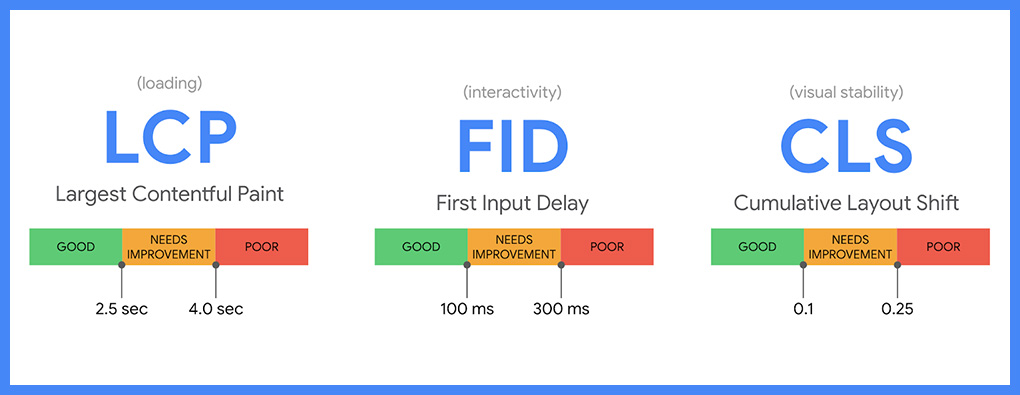
Google’s Core Web Vitals standardize user experience metrics. The three components of Core Web Vitals — loading speed, user interaction, and visual stability — represent three factors that influence how users interact with a website.
By providing detailed benchmark scores, Core Web Vitals enables website owners to assess their websites and user experiences and identify areas for improvement.
Time To First Byte
Time to First Byte (TTFB) is a fundamental metric for assessing web server responsiveness and connection setup time in the lab and the field. It aids in determining when a web server is responding to requests too slowly.
Navigation requests, or requests for an HTML document, come before any other useful loading performance metric.
Best WordPress Theme
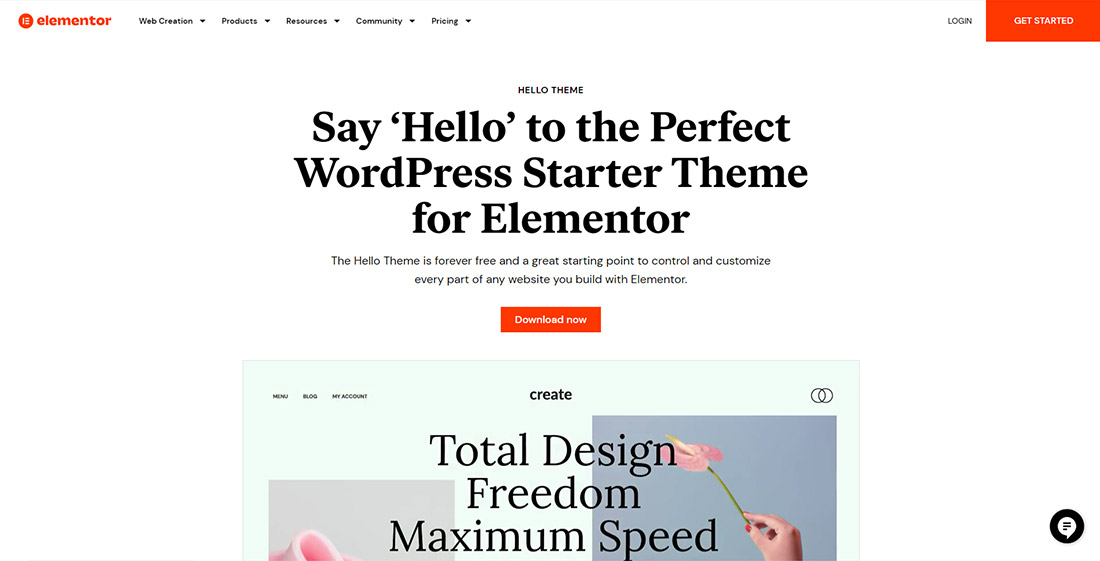
The official WordPress theme library offers thousands of free themes and many more premium themes. Either search for themes that excelled in independent tests or tested the theme yourself.
The Hello Theme is one of the most widely used solutions available for Elementor, it provided block-based design long before the Gutenberg Block Editor appeared on the scene:
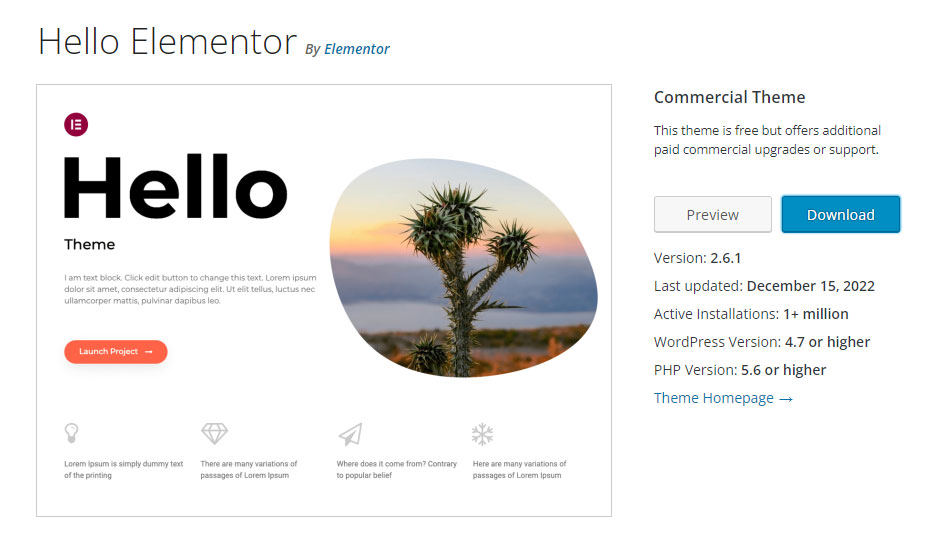
Elementor’s Hello Theme has been a great way to make website building more accessible and efficient. It is incredibly user-friendly, and the drag-and-drop editor lets you customize your site quickly and easily. With features like a customizable home page, custom post types, and support for WooCommerce integration, Elementor has made it easy for anyone to create beautiful websites in no time.
Whether you’re looking for a lovely blog or an eCommerce store, the Hello Theme from Elementor can help take your website to the next level. So if you have been searching for a tool that simplifies building a fantastic website and brings your vision to life, HELLO THEME from Elementor is just the thing for you.
Step 1: Get Started with WordPress Settings
WordPress has SEO settings that can be used to improve website ranking instantly. The following are three basic SEO settings to configure:
- Site settings: WordPress has a built-in feature that enables users to prevent search engine spiders from visiting their websites. You must ensure that this setting is disabled for your website to appear in search results.
- Set up a proper URL structure: Your website’s pages and blog posts each have a unique permalink. Your WordPress website’s SEO success with the SEO beginners guide depends on these permalinks. This is so that the search engine can understand the content of the page using the words in the permalink.
To give search engines a better understanding of what the page stands for, it is a good idea to include target keywords in the permalinks. However, WordPress does not, by default, support custom permalink structures. As a result, you have to change it by hand. Therefore, you must adjust this manually.
You can change the permalink structure under Settings > Permalinks. Many WordPress users also use the “Post name”. The WordPress tool can automatically suggest a suitable permalink for a page based on the content of the page.
It filters out extraneous words without changing the permalinks’ semantics to make them shorter.
Check the health of your website using WordPress SEO: WordPress’s Site Health feature was first made available in version 5.2, and the Site Health widget was included in version 5.4
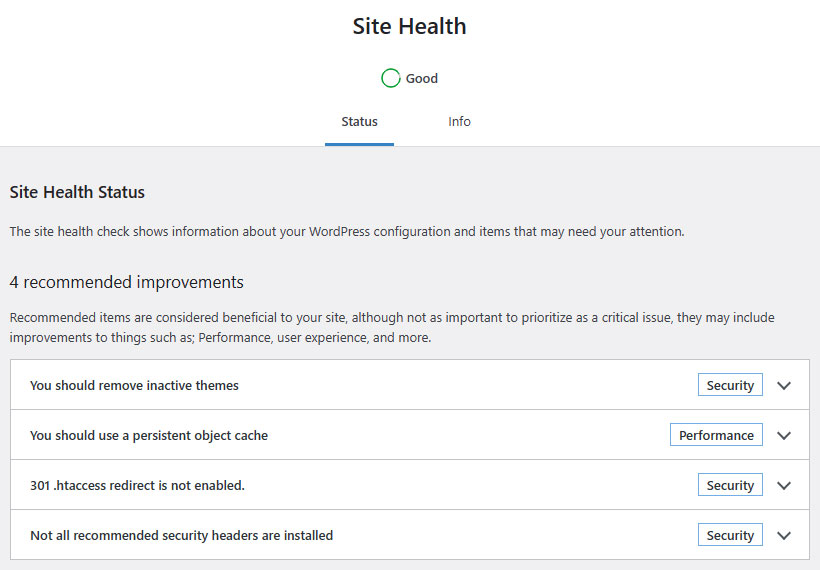
Users can use this feature to check on the health of their website, and it will alert them if any changes or enhancements are required. Because it flags fixes and updates for problems that could endanger the website’s search engine ranking, this feature is also crucial for SEO.
For instance, a security update will ensure that hackers cannot exploit the website’s flaws and cause search engine penalties. This tool can also find several issues, such as outdated WordPress versions and missing SSL certificates.
Search Engine Visibility
Here’s how to enable or disable the “Discourage search engines” option in WordPress if you don’t want to go through the additional steps and want to return to the default setting.
Enter your WordPress login information and go to Settings » Reading.

You can prevent search engines from indexing this site by checking the box next to the Search Engine Visibility option.
If this is already enabled and you still want your website to be indexed, uncheck it. Check if you’re stopping your website from being indexed (and make a note somewhere to remind yourself to turn it off later!).
Once you have finished, click Save Changes. Your website may need some time to be reindexed or removed from the search results.
You can manually edit robots.txt to remove the “Disallow” flag if your site is still deindexed or remove the index code from your header file.
Setup URL Structures
The following step is to optimize your URLs for search engines. SEO-friendly URLs let users and search engines understand the context of your content. One ranking factor has URLs optimized for search engines, which increases the likelihood that your website will appear higher in search results.
Include your keywords in your URLs for the best results in enhancing their search engine friendliness.
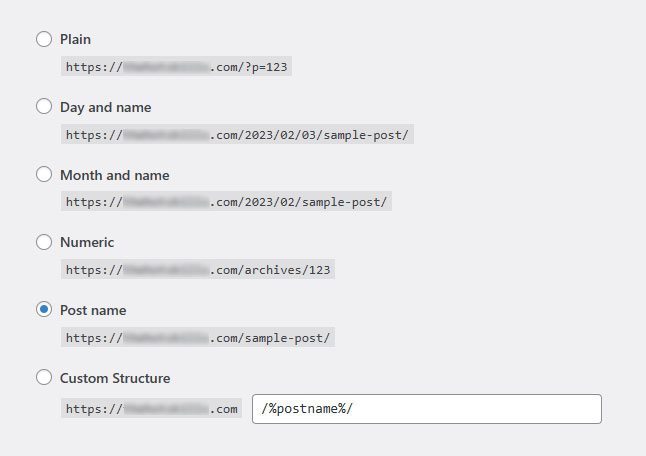
Go to Settings » Permalinks in WordPress to set your default permalink structure.
Let’s select Post Name as the option. Remember to save your changes after you’re finished. Only new users are advised to complete this step. Remember that it’s not in your best interest to change the permalink structure on your website to avoid losing organic traffic and rankings.
Start using SSL/HTTPS
It is crucial to use a secure HTTPS connection. It can raise the ranking of your website on Google since it is a verified ranking factor.
And you don’t want your website to show up in the web browser as “Not Secure”.
It would help if you used an SSL (Secure Sockets Layer) certificate to encrypt the connection to your website to protect it. This guarantees that any data passing through your website is encrypted securely.
- Visit the control panel for your hosting company. (You must first log into the hosting administration).
- Check the settings for “Security” or “SSL certificate”. Just Google “[name of your host] SSL certificate settings” if you can’t find it. Let’s Encrypt SSL certificates are offered for free by most WordPress hosting companies.
- Choose the certificate, then install it.
Installing the Simple SSL plugin will ensure that your WordPress website recognizes and adequately utilizes the SSL certificate.
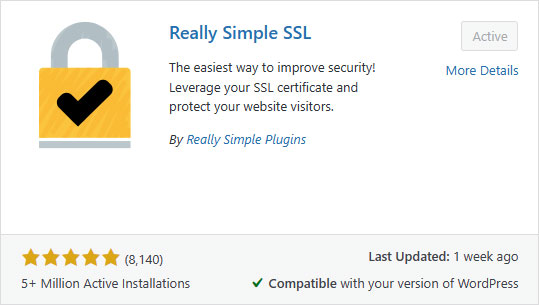
In the left menu of your WordPress control panel, select Plugins » Add new after that, and then look up really simple SSL. Once you’ve located Simple SSL, select Install Now. Then press the Activate button and adhere to the plugin’s basic setting instructions.
Recommended: How to Secure Your WordPress Website
Step 2: Install WordPress SEO Plugin
Yoast SEO
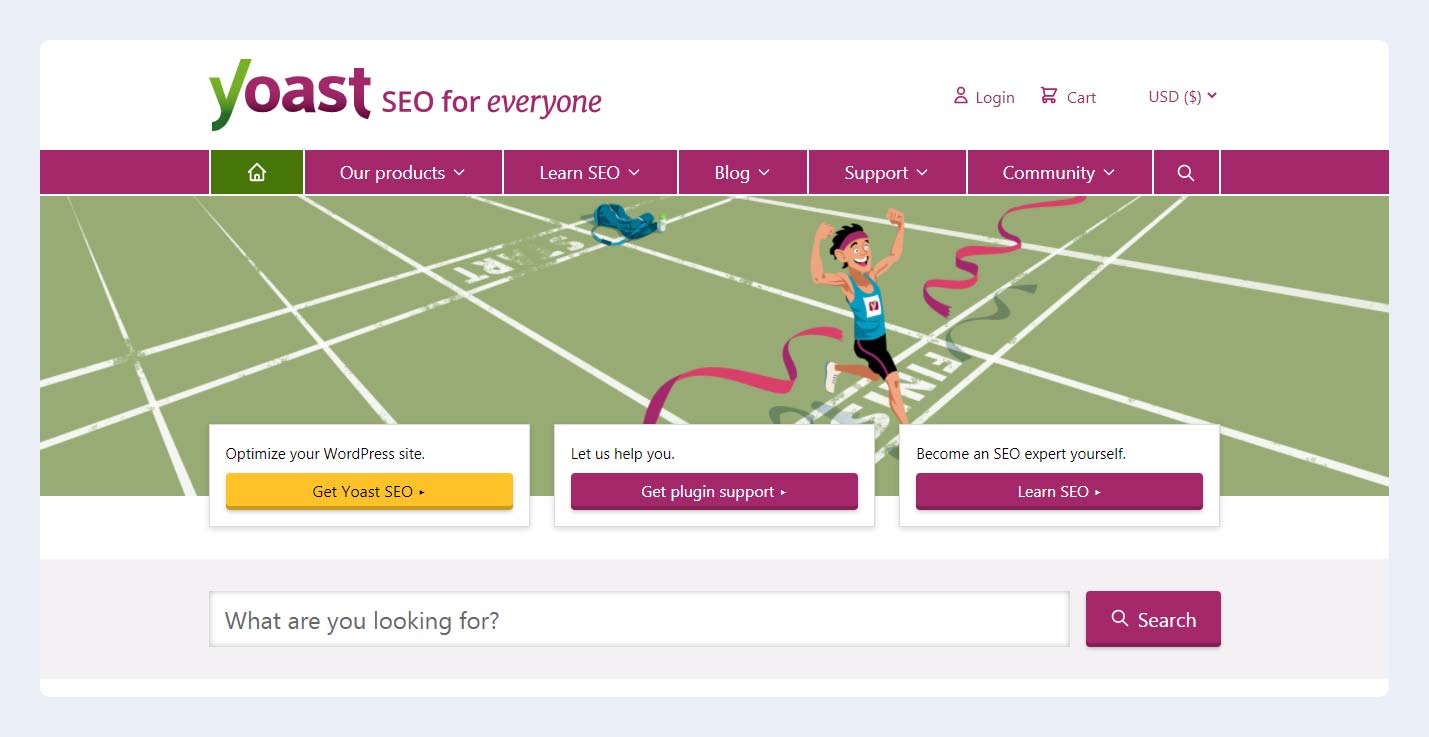
The Yoast SEO plugin for WordPress enables us to change SEO settings without writing code. It performs site-wide and targeted redirects to your pages and posts as one of the best SEO plugins.
After completing the Plugins » Add New » enter “Yoast SEO” in the search field to begin the installation process. You can activate it and finish the installation quickly after choosing the “Install Now” option.
You can change the SEO settings for the entire site from the plugin settings. To begin, select general settings and confirm that all features are turned on. As long as these are turned on, features like the XML sitemap you’ll use for your website, SEO analysis, and the word count you’ll use in pages and articles will all work.
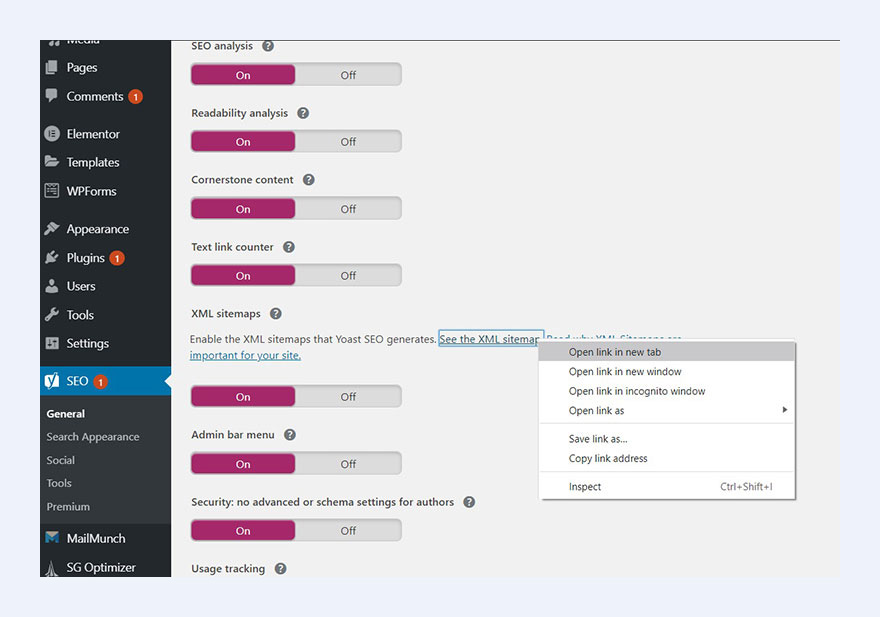
Following webmaster accounts and the statistics that result from them, correctly analyzing and interpreting these analyses, and taking the appropriate action are all crucial for SEO. You can also integrate your web admin tools in a section of Yoast SEO.
Your administrator accounts, including those for Google Search Console and Bing Webmaster Tools, can be linked to your website from here.
RankMath
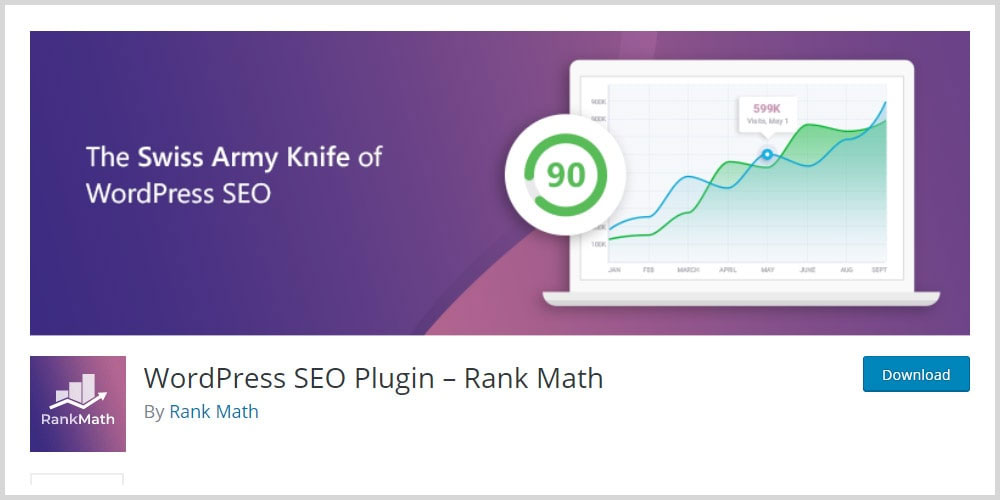
You can manage all of your on-page SEO requirements for all of your website content with Rank Math. The WordPress administrative dashboard displays essential updates and information thanks to Google Search Console integration.
To track which keywords you’re ranking for and the number of impressions you’re receiving for various searches, Rank Math manages your meta tags for index, nofollow, and archive. Rank Math displays errors that Google finds on your website in clear, understandable text.
Features include XML sitemaps, rich snippets, internal linking suggestions, 404 monitoring, redirects, local SEO, and image SEO. It is one of the best SEO plugins for WordPress because of this.
Step 3: Submit Your Website to Google Search Console
The free Google Search Console tool enables users to track website traffic, examine keyword performance, address problems, and receive notifications from Google about their website. It provides data on a website’s performance in organic search and recommendations for enhancing Google’s indexing of the site.
Contrary to Google Analytics, Search Console only offers traffic data originating from web searches; it excludes other segments like direct traffic, traffic from ads, and traffic from site referrals.
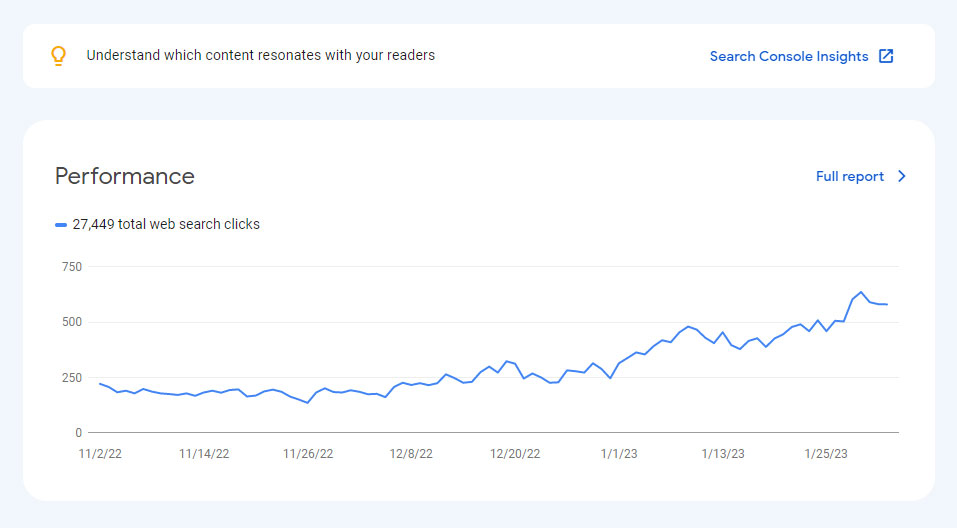
Google introduced Search Console almost 15 years ago when it was still referred to as Webmaster Tools. The objective has remained the same even though the name and many of its features have changed since then.
Although Google Search Console cannot be used to alter your website directly, it can be used to submit pages to Google’s index, verify that the URLs on your site are valid, and look for errors across your entire domain property.
Search Console is a valuable tool for modifying strategy, especially for SEO. Businesses can learn how exactly people are accessing their websites and how to improve existing performance using the search console data.
This indicates that it’s a crucial tool for any company that depends on its website to provide a positive user experience or generate organic traffic leads.
Add Property or Domain
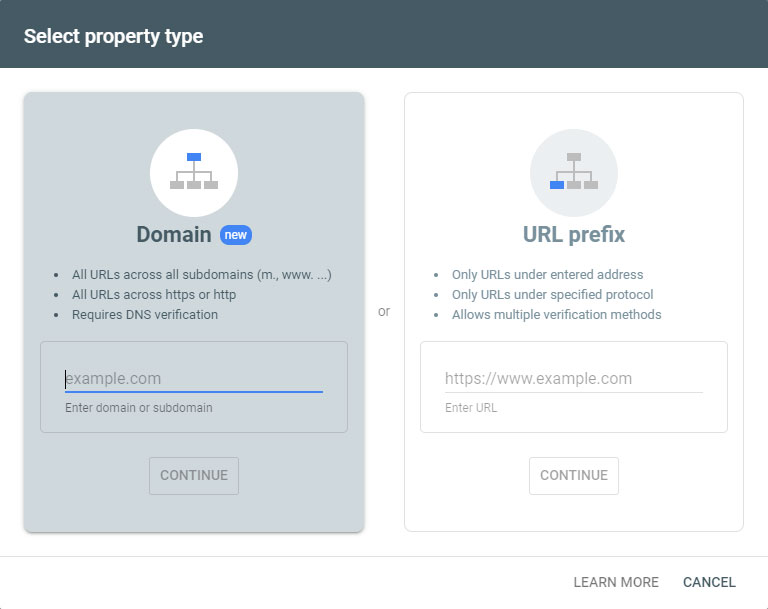
Different top-level domains (also known as extensions) can be used for domains (TLDs). Among the most popular TLDs are:
- The most common TLD for websites is .com, which was first used by commercial organizations and is now used by all websites.
- .gov: The most common TLD for government websites is .gov, .edu: Used by most colleges and universities.
- Additionally, generic TLDs like .biz for businesses, .app for mobile apps, and .blog for blogs are available.
Although these extensions have no direct impact on your SEO, we advise choosing a well-known TLD like .com. Users might be suspicious of strange domains and link them to spammy websites.
Users may avoid your website even if it is entirely legitimate if it has a .xyz TLD because they believe bad actors use that extension. You may ponder whether regional TLDs, like .ca or .co.uk, affect your rankings.
Yes! Your website may become more accessible to users in a particular country by adding a localized extension.
Add Sitemap
The pages of your website are listed in an XML (extensible markup language) file called a WordPress Sitemap. Search engines can more easily navigate your website and index the content you want to appear high in search results. Because XML is machine-readable and makes it simpler for search engine crawlers to read, these files are written in that format.

A sitemap provides additional information to search engines such as Google, Bing, DuckDuckGo, and others, such as the location of your content, the date the page was last updated, its importance to your website, and more.
However, compare XML sitemaps to HTML sitemaps. The straightforward distinction between the two is that HTML is for your users and facilitates. While XML is not visible to users and is intended for search engines only, it contains metadata along with the URLs of your website.
Step 4: Optimizing Your Pages and Blog Posts for SEO
Optimizing Title
The blog post’s title draws a reader’s attention even before they click on a link. You must nail your title because in a crowded search engine results page (SERP), being more appealing and relevant to your audience’s search intent can mean the difference between a click and a pass.
The needs of search engines and users are balanced in a perfectly optimized SEO title, making it both interesting to read and beneficial for keyword rankings. When used correctly, SEO titles can increase your SERP visibility and the number of clicks from search engines. Your title’s inclusion of keywords may improve your ranking for those phrases.
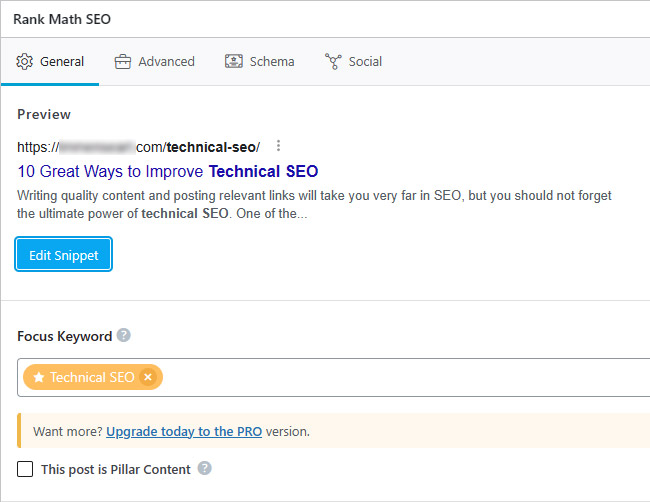
Optimizing Content
Starting with your original ideas or distinctive point of view on a topic will help you write engaging content for your WordPress website. It also entails presenting these ideas clearly and understandably. Doing it all at once will help you draw in and maintain your desired audience.
Beginners frequently think that activating and installing a WordPress SEO plugin is all that is necessary. SEO is a continuous process that you must maintain if you want the best results.
The best WordPress SEO plugins allow you to add titles, descriptions, and target keywords to every blog post and page.
Additionally, it provides a preview of what people will find when searching for you.
It also gives you a preview of what people will see when they perform a Google search for your website.
We advise you to enhance your SEO title and description to attract the most visitors.
Internal and External Links
Internal links are any links on your website that go from one page to another. Links help users and search engines find the content on your website.
Links are used by your visitors to navigate your website and find the information they need.
Search engines also use links to navigate through your WordPress website. The absence of links prevents a page from being displayed.
To enhance your WordPress SEO, you must increase your website’s authority. One of the key factors search engines consider when determining your site’s source is the number of internal links to your pages, articles, blogs, and other content.
If you use the appropriate internal links, both Google and your visitors will be directed to your most important pages. For this reason, many SEO experts strategically link to essential websites.
WordPress SEO Best Practices
Website Security
A sea of websites make up the world wide web. Many people don’t consider that their website may be at risk of being hacked due to the presence of over 2 billion websites and the feeling of being an anonymous member of the vast crowd. You might be fine if you have never been the target of such crimes.
The possibility is much higher than you might think, even if it never happened to you. Therefore, it is preferable to be adequately protected now rather than regretting it later. It’s crucial to keep in mind the most common WordPress attacks when you build any website.
The main goal is to make your website as safe as possible, regardless of whether you build it yourself or hire a WordPress Website development company to assist.
Due to the high number of businesses operating online and the intense competition, it is much more likely than you might think that you will be attacked by a rival or other party. So let’s go into great detail about WordPress website security.
To keep your company secures, abide by these guidelines:
- Always go with secure hosting
- Protect your Login Page
- Configure a Web Application Firewall (WAF)
- Anti-Distributed Denial of Service (DDoS) Protection
- Add an Extra Layer of Security with Plug-Ins
- Avoid allowing spam on your website
- For your website, use an SSL Certificate
Website Speed & Health Performance
Making sure that the websites load quickly has become a top priority for site owners ever since Google announced the addition of page speed as one of the metrics used to determine SEO ranking.
The speed at which a page load impacts whether users leave the page before it fully loads. You risk losing a lot of traffic and conversions if your website loads slowly.
Are you looking for ways to speed up your WordPress site so you will retain visitors? Nothing is worse than waiting too long for a web page to load. Fortunately, there are a few WordPress performance optimization plugins that you should be utilizing.
This extensive list, including cache optimization and image compression, will improve your website’s front-end optimization.
Page speed is important to you as a website owner for two main reasons:
- Page speed affects your SEO rankings first. Search engines penalize the slower website when the two websites are comparable in all other SEO factors. Although the severity of the penalty imposed by page ranking algorithms is unknown, it is a good idea to speed up every aspect of your website.
- Second, internet users tend to have a limited attention span. With each passing second, the likelihood that visitors will leave your site before it loads increases unless they are genuinely interested in reading your content. If the subsequent checkout process is lengthy, they might remove everything from their carts.
Overall, quicker page loads increase page views and conversions while also helping you rank higher in search results. Additionally, it improves user experience. Although no plugin can do everything, combining several plugins that each address a different need is a good idea. Finding the ideal WordPress performance plugin for your website might take some trial and error, but this list of plugins is the best place to start.
Images Optimization
Everyone is concerned about a slow website. Not only does it drive away visitors, but it also impacts your SEO. Therefore, one of the most important things to do when running a business or even a personal website is to keep it “in shape”.
Your WordPress site can be sped up in various ways, all of which work well together. There needs to be a system that works everywhere. Combining more of these techniques will increase the speed of your website. Keep reading to learn how to manually and automatically optimize every image on your WordPress website. This step-by-step tutorial on image optimization will help your website load more quickly and efficiently.
Images are having an impact on your WordPress site for the following three main reasons:
- They are far too big. Use scaled-down sizes.
- They are excessive, necessitating numerous HTTP requests.
- Together with HTML, CSS, and JavaScript, they support the synchronous loading of elements. The render time ultimately increases as a result of this. The page will load more quickly if you display your images gradually (via lazy loading), which prevents them from loading simultaneously with other elements.
So yes, image optimization is crucial in making your site lighter. However, you must first identify the cause of your website’s slow loading time. Websites today use more images than ever before to draw users’ attention.
Since multimedia (images, videos, and podcasts) has become so popular over the past five years, website owners have started using more graphical and image-heavy pages. People occasionally overlook or pay insufficient attention to the gradual impact frequent image uploads have on their WordPress site speed.
This should be your top priority, particularly if your website has a lot of images and your content is mainly visual.
Add Alt Text to All of Your Images
WordPress can’t do everything for you but it does make almost anything brutally simple for you. Each time you add an image to your WordPress website you can add alt-text. You don’t have to go anywhere to find it, it’s right in front of you – see below:
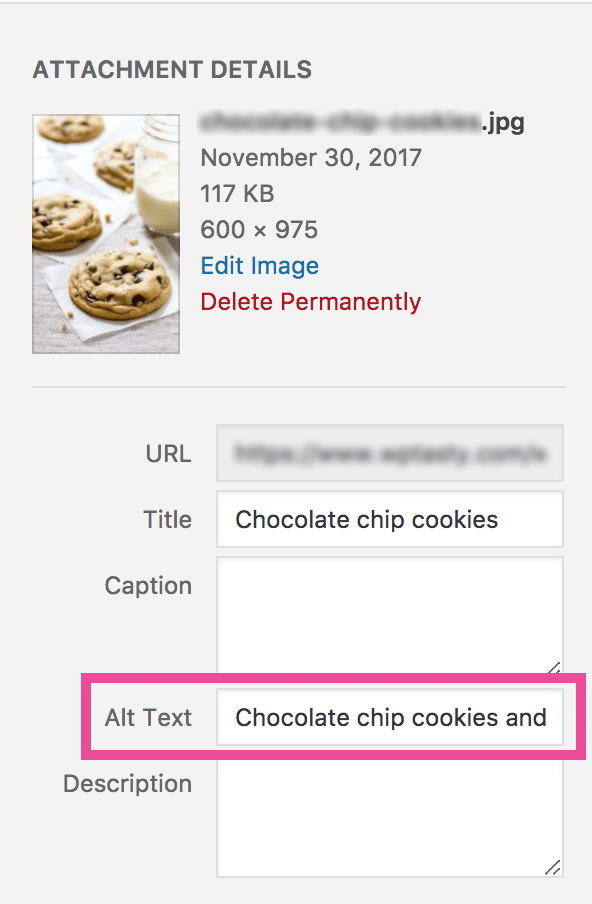
This isn’t a vanity thing to make George happy. It’s a way of giving Google more information about your images. This is important because Google can’t read images. By adding alt-text to them you can rank for your keywords. By not adding alt-text you miss a chance to optimize your images for SEO.
Activate you Breadcrumbs
A breadcrumb trail lets you guide people back to a source. In SEO, the principle is the same — breadcrumbs help users and search engines piece your site and its content back together.
The SEO benefits of using breadcrumbs are:
- They make it easier to guide users through your website
- They direct keywords to relevant pages
- They strengthen the internal linking structure of your website
Some premium WordPress themes have a built-in function for breadcrumbs. Check your theme and see if breadcrumbs are supported. If not you can use your Yoast plugin – this article explains how to do it.
There are three main types of breadcrumb:
- Hierarchical breadcrumbs: these explain where you are on a website and how far away from the homepage you are
- Attribute-driven breadcrumbs: these most commonly relate to product attributes on ecommerce websites
- Historical breadcrumbs: these are a historical record. They list where you have been on a website
To find out more about the SEO benefit of breadcrumbs, watch the video underneath:
Use the Skyscraper Technique
Links are one of the most important parts of SEO. They improve the authority of your website and drive more traffic to it. One of the best hacks to get the most from links is to use the skyscraper technique. Why? Because it lets you profit from other high ranking content.
It’s simple to use the skyscraper technique; all you need to do is follow these steps:
- Find a piece of content that’s gained lots of links. If you’re not sure how to do this, I recommend using Ahrefs. It’s a great SEO tool that lets you see the link profile of any piece of content
- Improve on the original by adding something new. This could be thickening out the current content, or adding a fresh idea, data, opinion etc.
- Promote your asset. Running it through the same sites as your source content is one method. However, a great hack is to use forums (such as Reddit). Doing this puts it in front of engaged readers who like talking about their passions. Win-win.
Using this strategy is a quick and dirty way of boosting the SEO standing of your WordPress site. With a few tools and a little will, you can steal the best bits from your peers.
Conclusion
WordPress gives you several options for search engine optimization. You can use a variety of plugins in addition to the default SEO settings in the dashboard to simplify your SEO efforts.
While developing your off-page SEO strategy, adhere to the best on-page SEO practices. Remember that SEO is a long-term, ongoing effort. You will see the results of your labor later. Your online presence will reach a new level if you keep honing your SEO skills.
